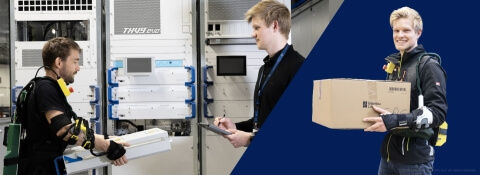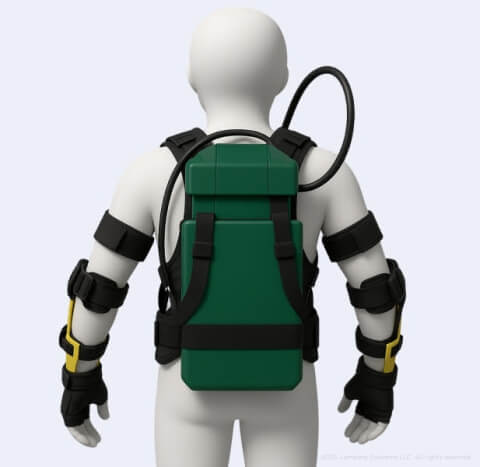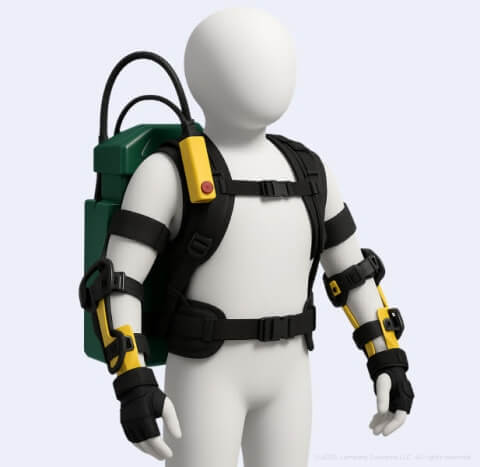
Electrical engineering for an industrial exoskeleton: collaboration with EASE and the Technical University of Munich
About the client
EASE, a spin-off of the Technical University of Munich (TUM), is a tech startup that emerged from an award-winning idea in 2019. Supported by TUM, the company develops ergonomic exoskeletons that provide real-time, adaptive support during lifting and carrying heavy loads.

The challenge
Machines cannot replace all industrial tasks. Sometimes, reinforcing human capabilities is a smarter solution. Industrial exoskeletons augment human movement and strength in physically demanding tasks, thereby leading to lower costs and increased productivity. For users, this means targeted muscle support, less physical fatigue, and a significantly lower risk of strain-related injuries.
With their exoskeleton prototype in hand, the client partnered with us for electronics engineering for their next revision. And a new set of challenges with it.
Delivered value


Solution
The first exoskeleton prototype, EASE, initially brought to us, was built using evaluation kits and proved bulky and not ideal yet for industrial applications. This highlighted the need for custom, industrial-grade electronics. In cooperation with EASE, the Lemberg Solutions team worked on the electrical engineering aspect: requirements analysis, architecture design, component selection, schematic design, PCB design, prototype manufacturing, and testing.
Meanwhile, the project was highly demanding from a technical perspective, where even the slightest data inaccuracy could compromise the entire system.
Requirements elicitation and architecture design
We collected and refined all product requirements, then developed a system architecture to strike the right balance between functionality and budget. Defining the architecture was the first critical step in aligning technical requirements with the project's long-term goals.
Schematic design and PCB layout
The electronics design covered component selection, schematic, and PCB layout for three custom boards. Each board was engineered to meet the specific functional, spatial, and mechanical constraints of its location within the exoskeleton.
This step required meticulous attention to detail, especially when it came to protecting high-sensitivity sensor data from electromagnetic interference and digital processing on the PCB.
The need to integrate the electronics within the extremely limited space added another layer of complexity. This required close collaboration with the client’s mechanical engineering team to ensure that all PCBs and components fit precisely without compromising performance.
Manufacturing support
We involved a contract EMS for the first PCB revision manufacturing and supported the production of the initial batch of 35 PCBs in total. This included guidance on PCB manufacturing and choosing component alternatives.
EE testing
The PCBs were thoroughly tested from an electrical engineering perspective. The testing included visual inspection, circuit verification, soldering quality checks, and bug fixing. After internal testing, the client continued validation on their side, with 24/7 support provided from our team.
We tested PCBs using the software provided by the client, ensuring thorough verification and supporting the client throughout the testing phase.
At EASE, we are developing a unique exoskeleton for logistics applications. To accelerate our electronics development and bring our product to market much sooner, we partnered with Lemberg Solutions on the embedded and electronics design. They supported us in implementing core functions and contributed to several key design decisions. They adapted to changes in timelines and requirements with great flexibility, which we truly appreciated. Communication was clear and efficient throughout the process, making the collaboration smooth and reliable.

How it works

